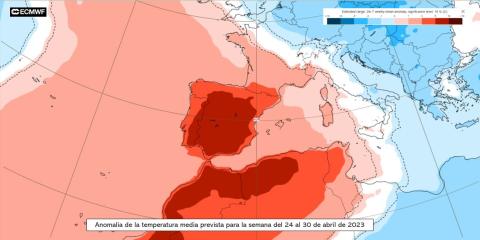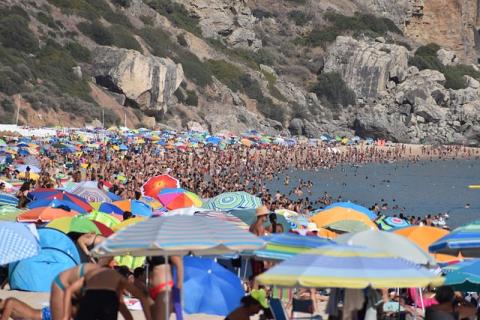State Meteorological Agency (Aemet)
If you are the contact person for this centre and you wish to make any changes, please contact us.
Head of the Climate Assessment and Modelling Area at AEMET
Superior State Meteorologist. AEMET.
Researcher at the Izaña Atmospheric Research Centre, AEMET
Meteorologist of the National Forecasting Center of AEMET
Spokesperson of the State Meteorological Agency (AEMET)

In 2025, climate change drove extreme weather events around the world, disproportionately affecting vulnerable and marginalised communities. In addition, global temperatures were exceptionally high, heatwaves were significantly more intense than 10 years ago, and millions of people were pushed to the limits of their ability to adapt. These are the main conclusions of the 2025 report published by the World Weather Attribution initiative, whose experts believe that ‘drastically reducing fossil fuel emissions remains the key policy for avoiding the worst impacts of climate change’.

Using data from the 180 companies with the highest carbon emissions—fossil fuel and cement producers—research has calculated that these companies contributed 50% to the increase in heatwave intensity since 1850-1900. The authors estimate that the individual emissions of each large polluting company may have contributed to the occurrence of between 16 and 53 heatwaves. The study, published in Nature, also shows that a quarter of the heatwaves recorded between 2000 and 2023 would have been virtually impossible without anthropogenic climate change.

Climate change has made the hot, dry and windy weather conditions that spread fires across the Iberian Peninsula 40 times more frequent and 30% more intense than in the pre-industrial climate, according to a rapid study by World Weather Attribution. The ten-day heatwave was also 200 times more likely and 3°C hotter due to climate change. The study, which analysed weather observations rather than climate models, warns that fires in Europe are overwhelming firefighting resources and highlights the importance of controlling vegetation in affected areas.

The State Meteorological Agency (AEMET) has reported that a warm weather will bring temperatures 6 to 7 ºC higher than normal for this time of year throughout Spain. According to AEMET, 29 May to 1 June could be the warmest days for this time of year since at least 1950.

Despite the overwhelming evidence, climate change denialist messages have found a loudspeaker in certain social networks. Of importance in this disinformation strategy is the attempt to discredit the scientific community in general, and climate researchers and weather forecasters in particular. However, the study of climate and the prediction and monitoring of adverse weather phenomena is in the interest of society as a whole.

Nitrous oxide is considered one of the three most important greenhouse gases, behind carbon dioxide and methane. According to a report by the Global Carbon Project, emissions of this gas from human activities continue to grow, with a 40% increase over the last four decades - from 2020 to 1980. The research, led by Boston College and published in the journal Earth System Science Data, reveals that in the last decade, agricultural production through the use of nitrogen fertilizers and animal manure contributed 74% of total anthropogenic emissions of this gas.

The State Meteorological Agency (AEMET) has issued an information note warning of "exceptionally high" temperatures for this time of year in Spain, especially between Friday 29 September and Monday 2 October.

A model-based study estimates that there will be ice-free Arctic Septembers about a decade earlier than previously predicted. The possibility of this happening between 2030 and 2050 exists even in low-emissions scenarios, which is a more pessimistic estimate than the last IPCC report. The results are published in the journal Nature Communications.

The State Meteorological Agency (AEMET) has reported that, from Tuesday, the progressive entry of a mass of very warm and dry air of African origin over the peninsula and the Balearic Islands will cause exceptionally high temperatures for this time of year, with values typical of summer. According to AEMET, during Thursday 27, the threshold of 30 ºC is likely to be exceeded throughout the southern half, as well as on the banks of the Ebro. On the other hand, 35 ºC is likely to extend to the Guadalquivir valley in Córdoba and Jaén. During Friday it is possible that 35 ºC will be exceeded in the banks of the Ebro in Zaragoza and other points of the southern half, in addition to the Guadalquivir valley, where the maximum temperature values could be around 38-40 ºC.

Spain is suffering these days a new heat wave that, according to experts, will last at least until Monday and it is not clear when it will end.